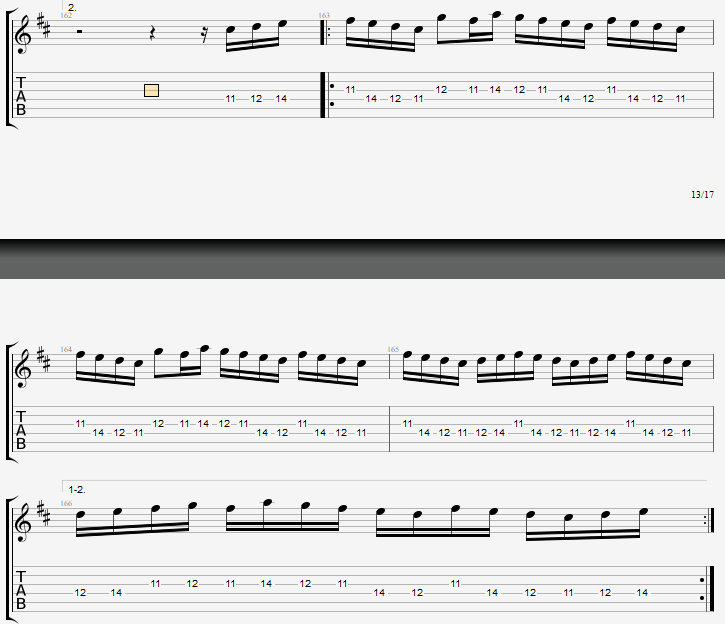Thanks, Troy and Thegent!
At the rest of going on a bit, I will split my remarks into three(3) sections: how Andy “Woodchuck” Wood would do it; how Al himself does it and leastily, how I might try to do it.
- Andy Wood’s system of supinated one-or-more escaping
If I’ve understood Andy Wood’s pivotal role in the terminology reboot to USX/DSX, which is only mildly likely, he uses the supinated double anchor position and separate motions for the USX (via pure radial deviation) and DSX (ulnar deviation + extension) components of what can either be a cross-picking double escape motion OR (at high speed) broken down into exactly one of the USX or DSX component such that the movement extends through the laser-pointer-centre-line of picking but doesn’t go far enough beyond the string to trigger the other part of the movement. Clearly this is a very elegant engineering solution!
- Al di Meola
If I hesitate to think that Al is doing this mechanism extensively, it’s because of the footage in anti-gravity of him in the trio with McLaughlin and de Lucia, where the delicate play of light and shadow on his hand was cited as evidence that he was (in my words, summarising what I took to be Troy’s opinion at the time) rotating the forearm such that his deviational movement changed momentarily from an angle that effortlessly generates USX to one generating DSX (what in the cheerful naïvety of our collective analytic youth we once called “two-way pickslanting”). Is it now the view that this light effect could be consistent with the Andy Wood mechanic? I mean, a superimposed wrist rotation to control the escape angle of a deviational mechanic is surely still physiologically possible? (This is mean to sound more confused than confrontational, I hope; I confuse easily and I’m not sure how radical the Andy Woods inspired re-evaluation has been, if that’s even what it primarily was.)
- Me
The main technical problem in the passage cited is an isolated note on a higher (thinner) string in this passage, akin to the Gilbert lick and when I was messing around in a supinated mainly-USX position yesterday it seemed surprisingly easy to swipe it at speeds that may (in my case) admittedly not scale up to interesting.
I normally use a wrist-forearm movement – I once tried to do what was once said to be the almost-purely rotational Yngwie mechanic and the biggest problem I had was tracking so I was glad to abandon it for the wrist-forearm technique of the Picking Primer a couple of weeks ago – and I can get enough twist on that to do the Pepsi lick on a good day, but what I can’t get to work at all in that system is swiping, it completely throws me off.
At this point I might go any of all sorts of ways (or let’s face it none - not getting this to work at all is very much on the table) but the laser-pointer-centre-line double-mechanic Andy Wood technique is the one that I am least convinced is going well for me in practice, even though it clearly has a lot of advantages if it can be made to work.
If the supinated wrist position gets properly comfortable and fluent, I will likely be tempted to develop a decent swiping technique on licks that suit it in that system purely as an homage to Big Al. (I also want a cherryburst Les Paul I am absurdly impressionable for my age.)
I do dabble in the crosspicking stuff, though, so if I get that going I could always switch to that full time.




 I actually find it a bit easier than the first one in this post, since it is in the middle of the guitar and my picking hand can find support easier than on the E string. It is almost the same riff though, but it loops neatly.
I actually find it a bit easier than the first one in this post, since it is in the middle of the guitar and my picking hand can find support easier than on the E string. It is almost the same riff though, but it loops neatly.

